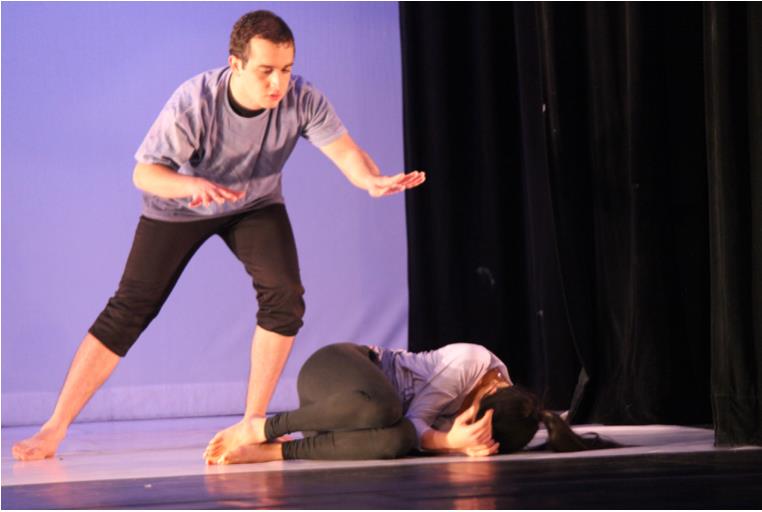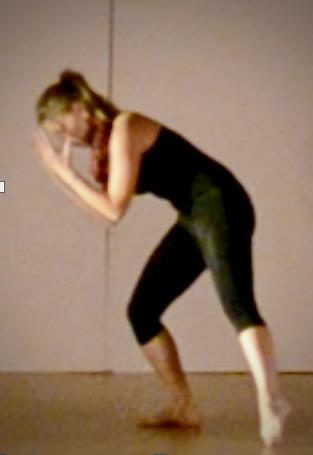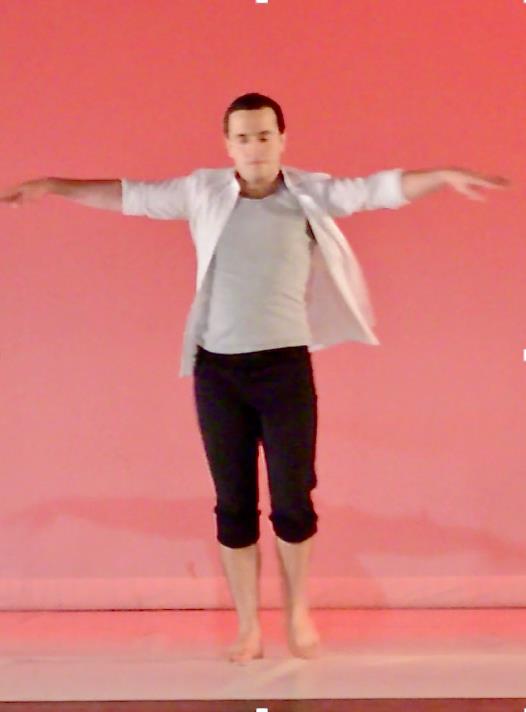NDEO’s Guest Blog Series features posts written by our members about their experiences in the fields of dance and dance education. We continue this series with a contribution by Kathleen Kingsley Baez, Executive Artistic Director of MoveWest Center for Movement Exploration. Guest posts reflect the experiences, opinions, and viewpoints of the author and are printed here with their permission. NDEO does not endorse any business, product, or service mentioned in guest blog posts. If you are interested in learning more about the guest blogger program or submitting an article for consideration, please visit this link.
A Story of Two Syrian Dance Students at the United World College in New Mexico
By Kathleen Kingsley Baez, Executive Artistic Director, MoveWest Center for Movement Exploration

Those of us who teach dance are able to observe evidence of student personal growth that may not be as obvious in other areas of study. How one moves through space offers unique insights into personality, intent, sense of self, and evidence of how one accepts challenges. With that in mind, I would like to tell you about two Syrian students I have had the privilege to teach, Farah al Haddad and Abdul Alloush.
Farah was my very first International Baccalaureate dance student at the United World College, one of several worldwide international schools originally founded by Kurt Hahn. I met her in the fall of 2011 on the first day of school outside my classroom door. Her eyes were shining with anticipation. I learned that she came from Damascus, Syria and that she had studied Russian ballet. She was eager to learn - dance history, analysis, modern dance technique and choreography. The IB Diploma Programme is an intensive and rigorous two- year course of study, and students from all over the world spend that time on campus together.

Improvisation and choreography were the hardest for her. At first, she was terrified of stepping outside of the confines of what was a known and comfortable vocabulary. I was concerned as the IB requirements for choreographic submissions are weighted heavily compared to performance and world dance. Then, something shifted. Farah began to challenge herself, moving from what was comfortable, to exploring the edges of her fears. Her work deepened and I saw her begin to trust her instincts, suspending self-judgment as she pushed herself to try new and unusual (for her) approaches to finding her own voice. When one shifts body ways, the mind also shifts.
By the end of the first year, she had crafted a solo that voiced her inner turmoil concerning the events in Syria, her hope for the promises of the Arab Spring and her own feelings of entrapment and guilt, all through a movement idiom that 6 months before was entirely foreign to her. “Dance your story,” I said. It is not easy to put that much of oneself on display for an audience, even for dancers far more experienced than Farah. Despite great trepidation, she performed her solo in front of 150 people. It was exceptionally well received. “In my solo dance piece, I was inspired by the events that are taking place in my country, Syria” she wrote. “The Syrian revolution with demands of freedom and equality - before the start of the civil war - affected my choice for the choreography. Mainly, the doubts and fears and the actions of the protesters, but also the resistance that they continue to face from the government.” All the more poignant given how events have played out in Syria.
Watching Farah deepen her sense of self, develop a trust in her abilities, and successfully meet challenges was a deeply heartwarming experience. These qualities, along with a heightened sense of compassion, kindness, and sense of wonder are what make Farah an extraordinary person. Farah taught me that bravery can have great grace. She embodied that - she embodies that still, I am sure.
Farah lives in London, now. She is a change-maker helping refugees. I am not surprised. And she is still dancing - dancing her story in more ways than one.
Abdul came up to me after the spring concert, beaming with excitement. He had never seen anything like this and could he please dance. As he was a first-year student, I told him to join the dance ensemble the following year. I never really expected to see him. I thought the excitement of the moment would surely wear off. But he showed up the following September at our first ensemble meeting.

I think a percentage of people are kinesthetic learners, dancers if you will, whether they know it or not. Abdul was one. He threw himself wholeheartedly into the choreography. Lack of training didn’t faze him in the least. His performance energy - even during rehearsals - was simply bursting out of him. I was worried that he would upstage the other dancers!
His exuberance was remarkable. He talked to me after rehearsals about dance, he brought in clips from the Syrian “So You Think You Can Dance” and asked my opinions. I shared a video of Iranian dancer Ziya Azazi’s work with him. He was fascinated. I asked him why he hadn’t chosen IB dance as a course of study. He looked surprised, then thoughtful, then said “Well…. I should have chosen IB Dance.” We both laughed.
He asked me if he could perform a solo in the concert. I said probably, but that I would need to see it first, thinking he would need help. He told me he would show it to me when he was finished. When I saw it, I abandoned all ideas of “helping” him. Structurally it may not have been the most sophisticated piece, but the raw emotion that he poured into this work was astounding. The piece was on our concert.
Abdul is from Homs, Syria. He looked sad when he told me that. I didn’t ask too many questions. His dance was about Homs. It was about him. It embodied anger and anguish, hopelessness and loss. He was dancing for himself, for friends killed, for Syria, for humanity. Towards the end of the dance he picked himself up off the floor and started the Turn, the Sufi Dervish whirling meditation. As the music swelled he turned. In my mind he turns still.
You know you have touched the audience when there is silence after a piece is finished - when the clapping doesn’t start immediately. At the blackout, there was complete silence in the auditorium. The, as the lights came up and he took his bow there was thunderous applause. His fellow students were on their feet, whistling and cheering. Many were crying, I among them.
I didn’t know Abdul in an academic setting. I don’t know what kind of a student Abdul was in the way I knew about Farah. But I knew who he was. Kind, thoughtful, and caring; these qualities are as important as leadership. They are a kind of leadership - a kind we need more of in this world.
Students at the UWC come from 90 different countries and all socioeconomic backgrounds. Guided in their two years at the school by a caring and mentoring faculty, this extraordinarily diverse student body form an intentional community actively practicing deep listening, empathy, and connection. Dance, in service to this goal, is a powerful way to reach the heart of the matter. I kept open office hours, invited my students off campus for tea, housed some at our home when they needed a break, listened if they cared to share, and supported them where I could.
I feel honored to know both these young people and to have been touched by them. I think of them with great fondness. I wish them well on their journeys. I am so glad that our paths crossed the way they did.
Both Farah and Abdul have graciously allowed me to share their stories and photographs.
 Kathleen Kingsley Báez is a dancer, choreographer and dance educator. She developed and taught a standards-based dance curriculum for an arts charter school, developed and taught the International Baccalaureate (IB) Degree Dance program at the UWC-USA and was an adjunct visiting lecturer in the Department of Education at New Mexico Highlands University. She performed with dance companies in Minnesota, Colombia, SA, Florida and Kansas City, Missouri before co-founding City in Motion Dance Theater in 1985 along with four other artistic director/performer/choreographers. She co-founded MoveWest Center for Movement Exploration along with 8 other dancer/choreographers in Santa Fe, New Mexico in 2019. She founded and directed the City in Motion Children's Dance Theater, and the Las Vegas (NM) Children's Dance Theater. Kathleen lives with her husband and three dogs on 10 acres on the Tecolote Land Grant in New Mexico.
Kathleen Kingsley Báez is a dancer, choreographer and dance educator. She developed and taught a standards-based dance curriculum for an arts charter school, developed and taught the International Baccalaureate (IB) Degree Dance program at the UWC-USA and was an adjunct visiting lecturer in the Department of Education at New Mexico Highlands University. She performed with dance companies in Minnesota, Colombia, SA, Florida and Kansas City, Missouri before co-founding City in Motion Dance Theater in 1985 along with four other artistic director/performer/choreographers. She co-founded MoveWest Center for Movement Exploration along with 8 other dancer/choreographers in Santa Fe, New Mexico in 2019. She founded and directed the City in Motion Children's Dance Theater, and the Las Vegas (NM) Children's Dance Theater. Kathleen lives with her husband and three dogs on 10 acres on the Tecolote Land Grant in New Mexico.